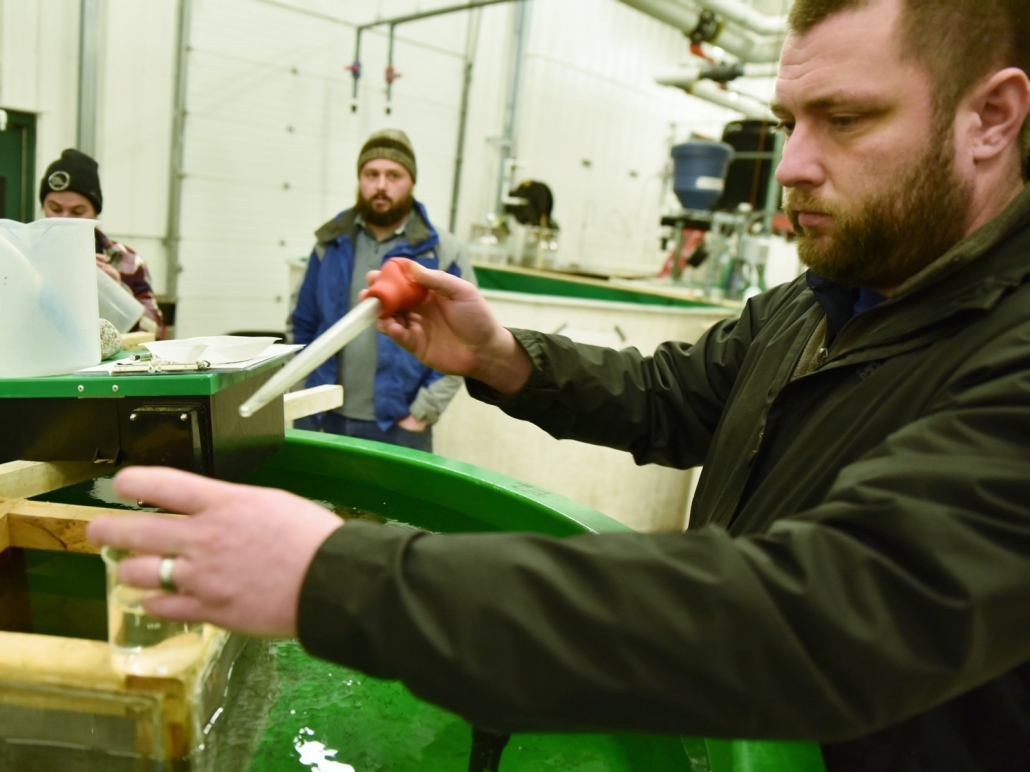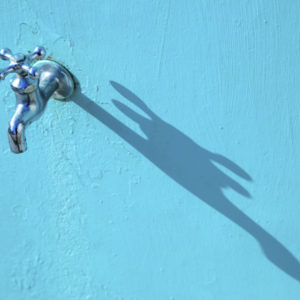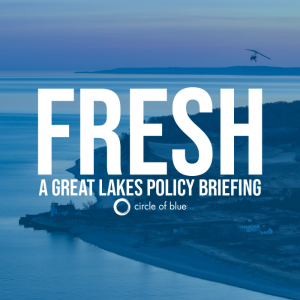Refresh
A Great Lakes News Collaborative series investigating the region’s water pollution challenges.
This series explores the Clean Water Act’s shortcomings in the Great Lakes, and how the region can more completely address water pollution in the next 50 years.
The collaborative’s four newsrooms — Bridge Michigan, Circle of Blue, Great Lakes Now, and Michigan Radio — work collaboratively to report on the most pressing water issues in the Great Lakes region. The collaboration is funded by the Charles Stewart Mott Foundation.
Michigan Radio | By Lester Graham – May 15, 2023
Commercial fishers are catching fewer whitefish in parts of the Great Lakes – and the Anishinaabe people are trying to figure out why. The Little Traverse Bay Bands of Odawa Indians is looking into low reproduction rates for the fish.
Great Lakes whitefish is pretty popular. Whether it’s smoked whitefish spread or an old-fashioned fish boil, it’s something of a tradition for some folks. But, whitefish has been important to Native Americans for a long, long time.
“It’s been an essential staple food for generations, for thousands of years,” said Kevin Donner, Great Lakes fisheries manager for the Little Traverse Bay Bands of Odawa Indians.
“There are creation stories that involve the white fish. There’s a clan that involves the white fish. So this is a pretty integral part of Odawa, Ojibwe, Anishinaabe culture,” Donner said.
According to the Michigan Sea Grant, early Native Americans would preserve the fish by smoking it. They also would make a powder of smoked Great Lakes Whitefish for use in stews, soups, and fish pies; they would also mix the powder with fresh blueberries.”
“In modern times, contemporary, most recently, it has been the lifeblood of the tribal, commercial and subsistence fishery in this region and in others throughout the Great Lakes,” Donner added.
But in much of the Great Lakes, the whitefish has been struggling. Reproduction rates have dropped. The Odawa fish hatchery crew is trying to learn why.

Lake whitefish on ice. The popular fish’s reproduction rates declined to the point there’s concern about whether commercial fishing will be viable in the future. Photo by Lester Graham, Michigan Radio
“There’s so much we don’t know,” Kris Dey said. He manages the hatchery.
“We know that they’re doing quite well in Green Bay and research suggests that most of the recruitment happening in Green Bay is actually coming from the river. And so we’re trying to kick start that again. You know, happen 120 years ago here. We’re trying to get that going on this side of the lake,” Dey said.
By “recruitment,” Dey is talking about the annual reproduction of the fish.
Reproduction in the Green Bay is good because some of its rivers are free flowing for miles upstream before fish are stopped by a dam. The Michigan side of Lake Michigan has a problem. Many of the rivers are not as free flowing and the whitefish have stopped –for the most part- spawning in them.
At the hatchery, they’re concentrating on raising fish from eggs. In a tank, recently hatched fish not much bigger than a grain of wild rice swim around.
As is often the case in hatchery reared fish, the whitefish have some deformities.

Kelsi Wygant holds a plastic incubator which is placed in a river. There are openings just large enough for larval fish to escape into the river. It’s one of many projects to help sustain the whitefish population. Photo by Lester Graham/Michigan Radio
Kelsi Wygant is working with a researcher from the University of Maine to see if it might be the food. Maybe there’s an essential nutrient missing or some other problem.
“So, we’ll see that if the food that we have been giving them, if they are if their bodies are set up to be able to digest that well or if we need to come up with something new that’s better suited for their digestion and such.”
That research is just the beginning. The Odawa tribe is looking at other issues such as possible bacterial infections in eggs, whether getting the fish out of the sterile hatchery tanks and into rivers might help.
But even in the wild, whitefish are challenged. Climate change is affecting the Great Lakes in ways that threaten egg survival. Climate change is also affecting the very bottom of the food web. The invasive quagga mussels are also damaging the bottom of the food web. And a whitefish food source, a small crustacean called diporeia, has nearly disappeared.
Researchers at universities in Michigan and other states are helping Annishinaabe tribes working on the whitefish reproduction problem. Altogether there are about 17 research projects are going.
Kris Dey said, that includes one with the Sault Ste. Marie Tribe of Chippewa Indians and Lake Superior whitefish.
“We’re working with Sault Tribe right now and we’re taking the fish and putting them into walleye ponds, basically. That’s something that ten years ago, I think only like the people in Finland were doing it and it seems to have worked out quite well for those guys and hopefully that might be an option for restoration.”

Kris Dey, fish hatchery manager, takes a sample from a tank of recently hatched whitefish as Kevin Donner looks on. Photo by Lester Graham, Michigan Radio
There’s a certain urgency because –with the exception of Wisconsin’s Green Bay- whitefish are not reproducing enough to sustain the fish population at a level that can be harvested commercially in the future. That not only means fewer whitefish for tribal members, but less revenue for the tribal communities. Already many Native American fishers have stopped catching whitefish. It’s not worth the fuel to take the boats out.
While the tribes are in touch with the U.S. Fish and Wildlife Service and the Michigan Department of Natural Resources and those governments are assisting on some projects, Kevin Donner said the bulk of the work has been carried out by the Anishinaabe tribes.
“Waiting around for a federal government or state government to determine to devote the sheer amount of resources that it would take to address this issue, we’re just- there’s no point,” he said laughing.
He added, “We hope that there continues to be growing interest and resources devoted to this. But in the meantime, we’re going to do what we can to try and abate this problem.”
Related
© 2023 Circle of Blue – all rights reserved
Terms of Service | Privacy Policy



